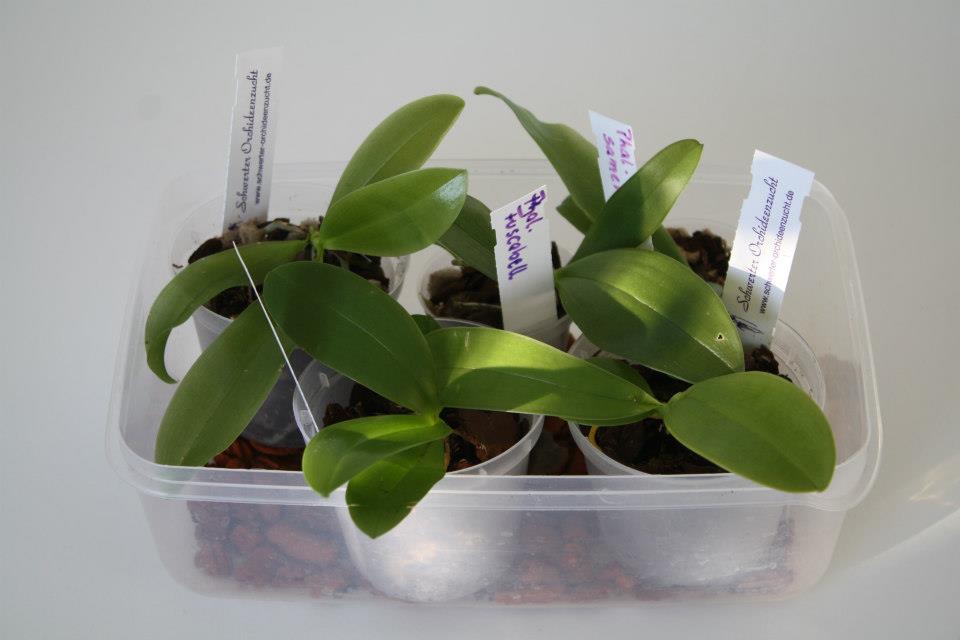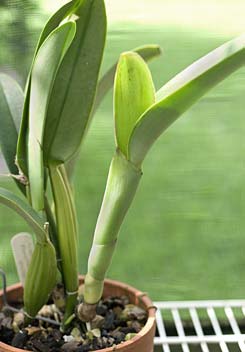Lazy orchids can be a real test of patience for the owner. You also have such a specimen, which no longer wants to bloom and you do not know what to do? Then I have six possible reasons and tips for you in this checklist, how you can counter the problem.
Contents
wrong location
Orchids live in their natural habitat under very special conditions for their species. They have settled there under these conditions and they grow and bloom particularly well under these conditions. If an orchid refuses to bloom on the windowsill at home, it may be that the demands it makes on its natural habitat are not sufficiently reflected in its place on the windowsill.
For example, there are orchids that are very light-hungry, such as vandeas. If these stand or hang in a place in the apartment that is too dark for them, they sometimes refuse to bloom for years. One measure would then be to offer them as bright a place as possible and wait to see if everything else is right and they want to bloom again. The opposite can also be the case: an orchid that likes partial shade is too sunny. Same game, only the other way around.
In addition to the amount of light, temperature plays a major role. There are orchids that prefer it warm but also those that prefer it temperate or rather cool. If an orchid is placed in a temperature range that is unattractive for it, this can also lead to a flowering strike.
In order to avoid such mistakes from the beginning, one should inform oneself about the requirements of the respective species before buying an orchid. Orchid nurseries will be happy to advise you on this. If you order online, you can search for the requirements of the chosen one in advance using a search engine. A proper location is already a good prerequisite for renewed flowering. But unfortunately no guarantee.

wrong watering behavior
Everyone waters their orchid differently, and everyone tells you something different about how to water your orchid. But every plant, every substrate and every home or greenhouse is different. And so, while there are general tips on watering that you should follow, ultimately you always have to look at how the orchid is doing specifically in its home location.
For example, one orchid may be much thirstier than another for whatever reason. If it is constantly lacking water due to a watering behavior that is not adapted to this, it will be under stress. Some orchids form flowers under stress, more or less to stimulate reproduction. Some orchids stop flowering to save their energy reserves and to ensure their survival.
An orchid that is kept too moist can also go on flowering strike. For example, when the root mass is already severely attacked by moisture and the roots are so damaged that they can no longer absorb water and thus nutrients. Then, despite the excess of water, the plant eventually also suffers from stress due to drought, since it no longer receives water. So if you optimize the watering for the particular orchid this could also help to encourage it to bloom again.
rest period not respected
Some orchids are lazy and need a resting period to encourage them to bloom again. For example, they need to be kept in a cooler place and receive little or no water. An example is Dendrobium nobile. If the orchids are not given the appropriate rest period, they react by stopping flowering.
They do not do this maliciously, but they are genetically programmed to form a flower only after the dormancy period has passed. Therefore, you should find out whether the orchid, which is lazy in flowering, may need a rest period and then be sure to observe it. The orchid will then perhaps thank you with a renewed bloom.

diseases or pest infestation
Another reason why an orchid may no longer bloom may be that it is sick or has been attacked by pests. Some diseases and pests are not immediately noticeable and thus remain unnoticed for a long time, but weaken the plant significantly in the meantime.
In order to prevent both diseases and pests, it is important to inspect the orchids often and to look for the first signs such as leaf discoloration or webs. If you have even the slightest suspicion of a disease or pest, you should immediately put the orchid separately. Then it is necessary to find out what exactly is wrong with the orchid and take appropriate measures.
If the orchid is healthy and pest-free again and has recovered for a while, chances are good that it will eventually bloom again. Depending on how badly damaged the orchid was, it can sometimes be a long way to flowering again. The more you are happy about it!
a too young orchid
When do you think an orchid blooms for the first time in its plant life? Many people will surely guess that an orchid blooms after one or two years. The truth is: orchids usually bloom for the first time at the earliest three to four years after they are sown and some even much later. So it takes some time before a flowering orchid comes into the trade.
At orchid dealers you can also buy orchids without flowers. And some of them are still young plants – most of them are marked as such – and therefore not yet flowering. When buying, you should always look for additions such as “young plant” or “in xy years flowering” and then be prepared for the fact that you may have to wait a little longer with the first flowering.

you have a lazy specimen.
Everything is right: location, light, temperature, watering habits, resting time, the orchid is topfi, old enough and healthy. And yet it has not wanted to bloom for several months or even years? Then it may be that you have caught a lazy orchid.
First of all you have to know that not all orchids bloom several times a year and for several months. Each orchid species or genus has its own main flowering period. There are species that bloom only once a year and some only for a few days.
So if an orchid does not bloom for a few months, there is usually no alarm yet. After a year or two, you can slowly think about whether you might have really got a lazy specimen, provided everything else is right.
I once had such a specimen, bought directly from the orchid grower. It was a Phalaenopsis primary hybrid, that is, a cross of two natural forms. The plant was already mighty big when it arrived at my place and definitely flowering. When after about three years there was still no flower in sight I was about to give the orchid away. But after about 3.5 years I suddenly saw two flower shoots flashing out of the stem. The wait was worth it and in the end the orchid gave me several flowers on both shoots.
You see, patience often pays off, especially when it comes to orchid care. So don’t throw in the towel right away and only give the orchid away if the whole thing really frustrates you too much or if you would rather give the space on your windowsill to another flowering orchid.


